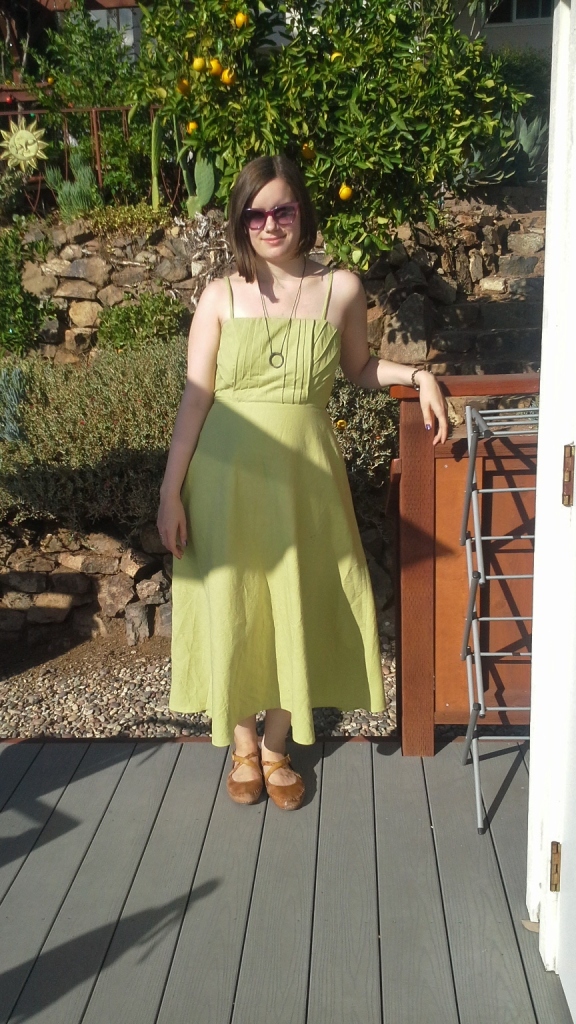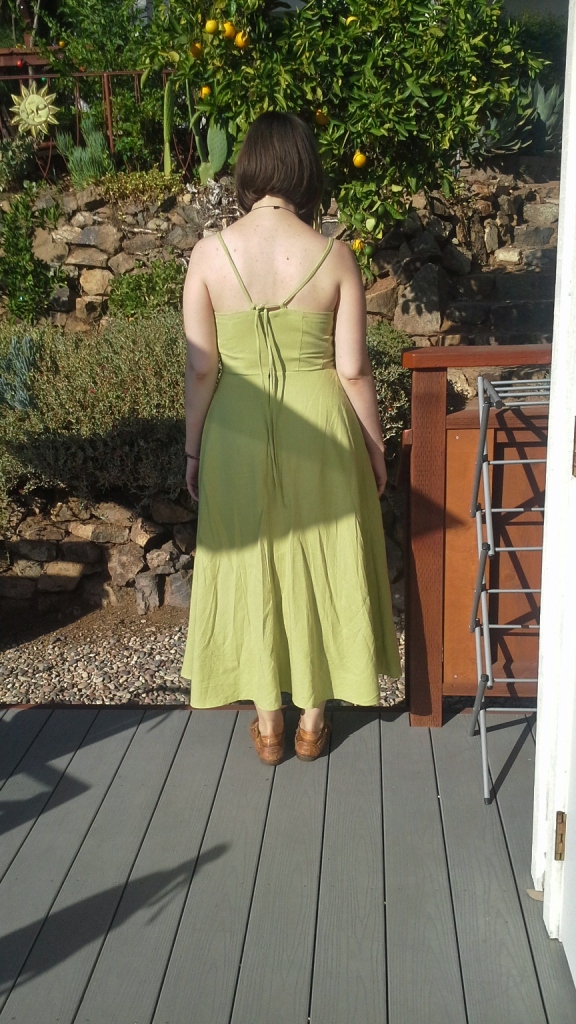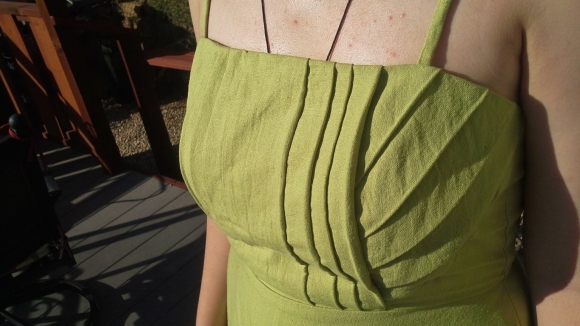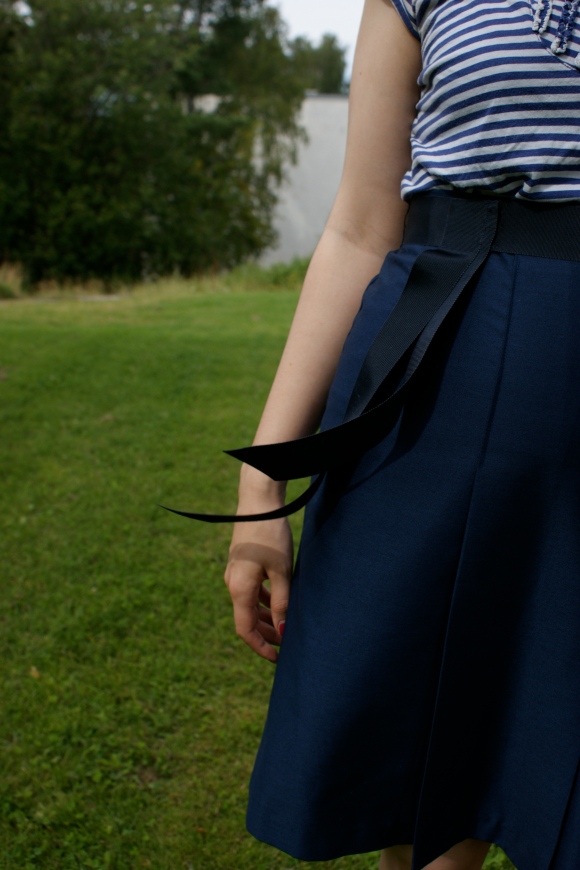In my first ever blog post, I had a couple of self-drafted shirts that people seemed to like. So I will attempt to explain how you can make one yourself.
Patterns
Start with the back piece, as the front piece is almost identical to it.

There’s only one real body measurement that you’ll need for this shirt, and that’s your hip measurement. Everything else depends on your personal preferences. I’ll use my own measurements as an example.
– Start by dividing your hip measurement in four. If you want a looser shirt, you can use a measurement slightly larger than your hip. Draw a straight line with that measurement on whatever paper you choose to make your patterns out of. My line was 25 cm (9,8″).
– Next, decide what length you want you shirt to be. this is probably best decided by measuring from your armpit, so basically from where the armhole would start. My shirt was 41 cm (~ 16″) long measured like this. Now draw this line from your first line like in the diagram above.
– Next decide your back length. This will probably depend a bit on how long your back is, but then again the shirt is quite loose, so I wouldn’t worry too much. My back length was exactly 20 cm longer than the measurement from the armpit, so that’s 61 cm (24″) long in total.
– Decide how wide you want your neckline and sleeve to be. My neckline was like a boatneck, so it was 30 cm (11,8″) wide, so that’s 15 cm (5,9″) on the pattern. Draw it so that it curves upwards slightly, the starting point of the sleeve being about 2 cm (~0,8″) higher than where the back line ended. Next draw the sleeve. My sleeve was 18 cm (7″) wide. The line is completely straight, parallel with the “1/4 of hip” -line. Now just draw a slightly curved line from where the sleeve ends to where your “shirt length from armpit” -line begins. Your pattern for the back piece of the shirt is now finished, and hopefully looks something like the diagram above.
Next, the front piece:

– All the measurements except the back length are the same as in the pattern for the back piece. So basically you can copy the back piece up until the armpit, then add four times your desired pleat-width to you original back length. Draw this line, and copy the top of the pattern from the back piece. Now draw a line connecting the sleeve to the armpit, and your done. My pleats were 2 cm (~0,8″) wide, so the center front of my front piece is exactly 8 cm (~3,1″) longer than the center back of my back piece. Mark your pleats according to the diagram, where the …… -lines mark the peak of the pleat, and the _ . _ . _ -lines are the ones that should be sewn together, as shown by the arrows in the diagram.
Construction
After finishing off the edges of the two pieces, start constructing the shirt by making the pleats. It’s probably easiest to pin them down and iron them before sewing. Remember not to sew the pleats all the way! The sleeves should be left pretty much open, so only sew the center portions, which is approximately the width of the neckline + 3 cm (~1,2″) on both sides. When you’re done with the pleats they should look something like this from the inside:
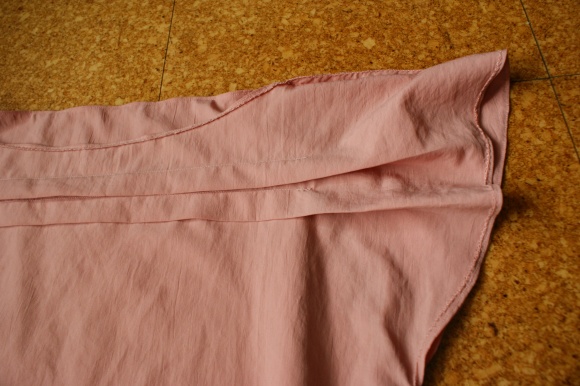

After the pleats are done, the rest is easy. Just sew the sides and shoulders together (right sides together, of course) and finish off the openings how you like.
I recommend using light fabrics for this shirt, as they show off the sleeves best. Something see-through could be awesome as well. You’ll need about 1-1,5 m (1,09-1,6 yds) of fabric, depending on whether you choose to cut the back piece on fold or not (and also on the width of the fabric).
So, I hope this makes any sense to anyone. Please bare in mind that I’ve always been rubbish at explaining stuff to others, so I’m really doing the best that I can. Feel free to ask any questions though :)

